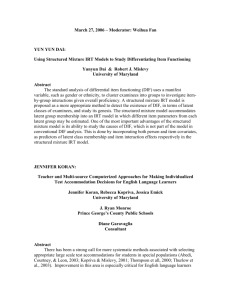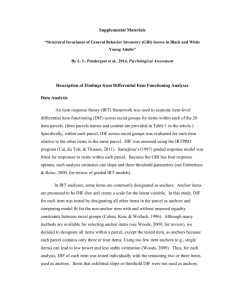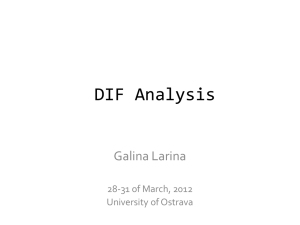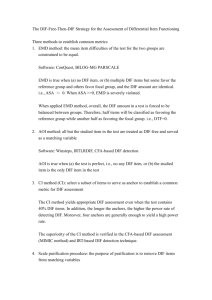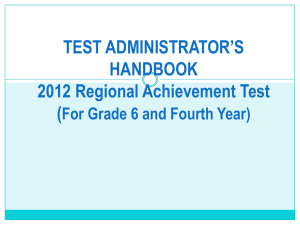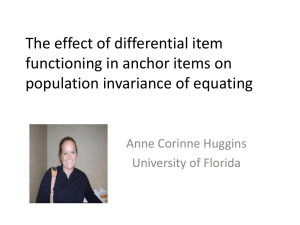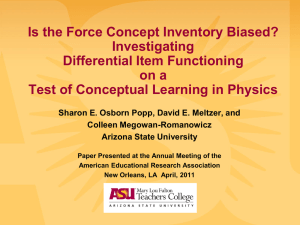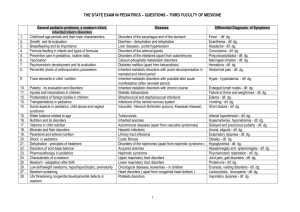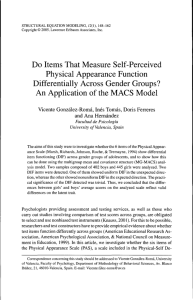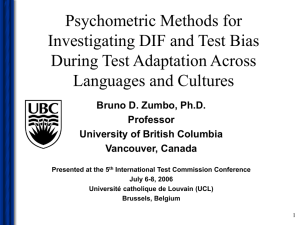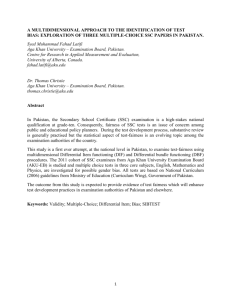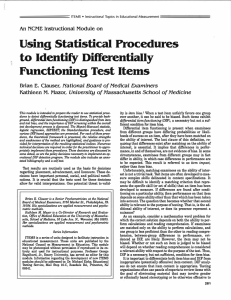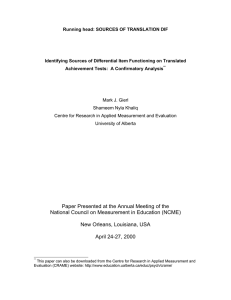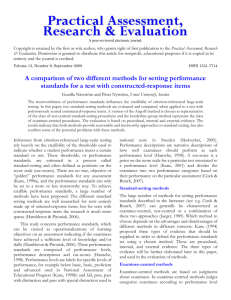A Mixture IRT Model Analysis of Ethnic Group DIF Taehoon Kang
advertisement
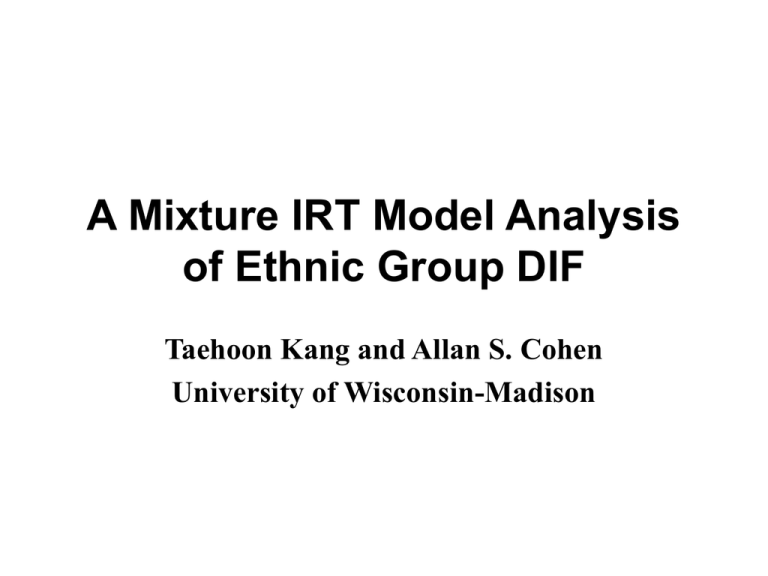
A Mixture IRT Model Analysis of Ethnic Group DIF Taehoon Kang and Allan S. Cohen University of Wisconsin-Madison Introduction • This study examines a method designed to help understand what causes DIF. • Efforts to detect DIF typically tell little about what caused DIF. - Most methods associate some manifest group characteristic such as gender or ethnicity with differential item performance. - These characteristics are usually only weakly related to DIF. • We start by assuming that not all examinees in one group are consistently advantaged (or disadvantaged) by a DIF item. • Instead, we assume that examinees advantaged (or disadvantaged) by DIF items are better regarded as latent classes in the data. • We then use mixture IRT models for identifying latent groups of examinees that are advantaged (or disadvantaged) by DIF in particular items. Data • 1996 NAEP State Mathematics Assessment for Grade 8, Block 4 – 21 MC items (N=18,958). • Sample 1 : 1,000 Caucasian and 1,000 African-American examinees • Sample 2 : 1,000 Caucasian and 1,000 Hispanic examinees Detection of DIF • For each sample, likelihood ratio tests were used to detect DIF in each of the 21 items between two manifest groups. • Four DIF items were found in Sample 1 (C vs. AA) • Three DIF items were found in Sample 2 (C vs. H) Mixture 3 PL Model (M3plM) • The mixture 3PL model (M3plM) describes the probability of a correct response to an item as • The 3PL is assumed to hold for each class, but the item parameters differ for different classes, and • each examinee is parameterized by a class membership (g) and a within class ability parameter (2g). • If the latent classes correspond directly to ethnicity, examinees in one ethnic group would be classed together separately from examinees in the other ethnic group: – Sample 1: Caucasian examinees would be classed in a “C-like” class and AfricanAmericans in an “AA-like” class. – Sample 2: Caucasian examinees would be classed in a “C-like” class and Hispanic examinees would be classed in an “H-like” class Results: Composition of Latent Groups: Item Characteristic Curves of DIF items : Caucasian & African-American Manifest groups Latent groups 0.8 0.6 0.2 0.4 P 0.2 0.4 P 0.6 0.8 1.0 Item 5 1.0 Item 5 -2 0 2 4 -4 0 theta theta Item 21 Item 21 2 4 2 4 0.6 C-like AA-like 0.0 0.2 0.4 P 0.0 0.2 0.4 P 0.6 0.8 C AA 0.8 -2 1.0 1.0 -4 C-like AA-like 0.0 0.0 C AA -4 -2 0 theta 2 4 -4 -2 0 theta Item Characteristic Curves of DIF items : Caucasian & Hispanic Manifest groups Latent groups 0.8 0.6 0.4 P 0.4 P 0.6 0.8 1.0 Item 12 1.0 Item 12 0.2 C-like H-like 0.0 0.0 0.2 C H 0 2 4 -4 -2 0 theta theta Item 14 Item 14 2 4 0.8 0.6 -4 -2 0 theta 2 4 C-like H-like 0.0 0.0 C H 0.2 0.4 P 0.2 0.4 P 0.6 0.8 1.0 -2 1.0 -4 -4 -2 0 theta 2 4 Results: Characteristics of Examinees Conclusions • • • • Ethnicity appears at best to be a weak clue to the causes of ethnic group DIF. M3plM gave us latent groups which are much more homogeneous in responding to DIF items. Results of this study suggest that at least some of the explanation of DIF may be related to attitudes toward mathematics. Mixture IRT models provide further insight into how DIF affects the responses of different latent subpopulations of examinees.
